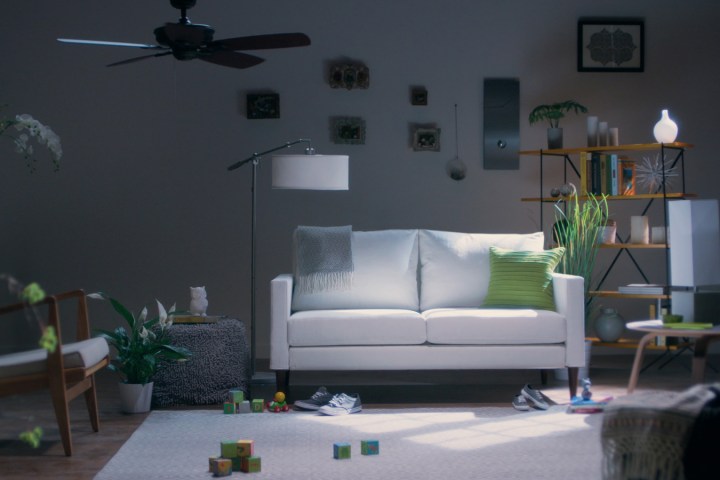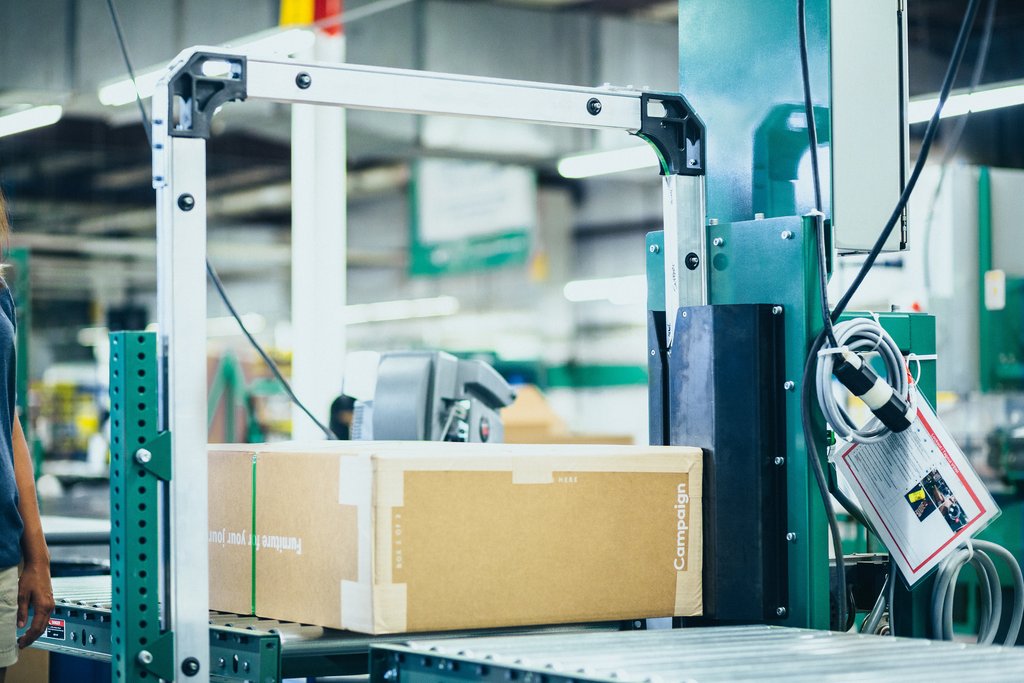
Leave it to Silicon Valley to figure out how to send you a couch via FedEx. That was the original goal of new high-quality furniture company Campaign, which has literally figured out how to overnight couches, armchairs and loveseats to their customers. (Well, in 4-7 business days, in most cases, but let’s not argue semantics just yet.)
If all this flat-packed furniture sounds a bit like IKEA, you’d be right, but you’d also be wrong. IKEA thinks in terms of shipping the most product it can in the smallest shipping envelope. Campaign Furniture, on the other hand, is laser-focused on delivery services like Fedex, so they’re designing their products around the logistics and the delivery instead of planning for it after the fact.
No tools required
The other outlier is the assembly process. Divorces have erupted over the process of assembling IKEA furniture. Google “building IKEA furniture” and you’ll quickly be led to stories with names like “Why Building IKEA Furniture is probably Satan’s Favorite Hobby,” and a particularly thorny bit of home furniture literally known as “the divorcemaker.”
Fundamentally, the furniture designed by Campaign doesn’t need a single tool for assembly—and assembly takes minutes instead of hours.
The founders at Campaign wanted to solve that problem before they began, which is why they started with the design process. The first people that founder Brad Sewell hired were a crop of engineers with experience making everything from kayaks to consumer electronics.
“I think some of the brightest minds in design aren’t going to the furniture space,” Sewell told Entrepreneur. ”Your smart minds are drawn to Apple, Boeing, Lockheed Martin. That focus isn’t making its way to furniture.”
Fundamentally, the furniture designed by Campaign doesn’t need a single tool for assembly — and assembly takes minutes instead of hours. Sewell recently spent two days in Manhattan hauling around one of the company’s armchairs to potential partners and investors to prove his concept is sound. He can literally carry a mid-century modern-style armchair around on the New York subway.
A classy alternative
Campaign’s furniture is a lot classier than the cheap-as-dirt dorm room furniture peddled by the likes of IKEA and Target, but it’s also within the price range of upscale brands like West Elm and Crate and Barrel. The company currently has three products available: “The Chair,” priced at $595; “The Loveseat,” a slightly cozier option for couples at $895; and “The Sofa,” a full-sized sofa priced at $1,195.
Once Campaign’s engineers solved the problem of logistics and delivery, they had to pivot to how design might impact aesthetics and vice-versa. They originally settled on California-milled steel as the best base material, a radical change from the pressed fiberboard used in cheaper alternatives. Once the frames, made of recyclable laser-cut steel tubing, are ready, the company layers on cover material that is 97 percent polyester and three percent nylon for a durable effect.
Because customers still have to spend some time to assemble the furniture (around 15 minutes with 1-2 people involved), there’s still an investment involved on the part of Campaign’s customers. That’s important because of a function called “The IKEA Effect,” which was the subject of a recent Harvard Business School paper. The study found that people assign more emotional attachment to products they built with their own hands. Campaign is able to harness that emotional bias as well, but in a fraction of the time of an IKEA build and without the divorce-rendering frustrations those little wrenches induce.
IKEA leaves much to be designed in terms of an assembly experience,” Sewell recently told Entrepreneur. “If you do the cost analysis, the shipping and your time would make that piece way more than it’s going for.”
Campaign’s origin
The idea for the company first occurred to Sewell when he moved from California to Boston to get his Masters in Business Administration at Harvard University. He couldn’t find a happy medium between disposable dorm furniture and high-end, highly-expensive alternatives, so he created one. He started the company in June of 2014, naming his new enterprise Campaign as a reference to the transportable furniture carted around by British soldiers while they were building the British Empire during the 1800s.
The next step in Sewell’s vision for Campaign is to partner with other designers to put out limited-edition covers and exclusive designs for the furniture. Campaign is already actively embracing showroom partners with showcase locations the company has dubbed its “outposts.” From the Lizard Lounge in Portland, Oregon, to the Brew & Brew in Austin, Texas, and The Marquet in Brooklyn, New York, Campaign is reaching out nationwide.
“Whether it’s your favorite coffee shop in Brooklyn or a hotel lobby in San Francisco … we really want to curate a list of great places to showcase a few pieces,” he told Entrepreneur. “So your buying experience would be visiting the website, seeing all the features, and then seeing a list of locations where you can try them out.”
Campaign intends to eventually create tables, nightstands, and bed frames once the company has established the quality and durability of the brand. They’ve already delivered products to more than 35 states and are actively hiring more staff, including a creative director and partnerships manager. To date, Sewell has raised more than $500,000 for Campaign, and aims to raise an additional $1 million, according to paperwork filed with the Securities and Exchange Commission.









